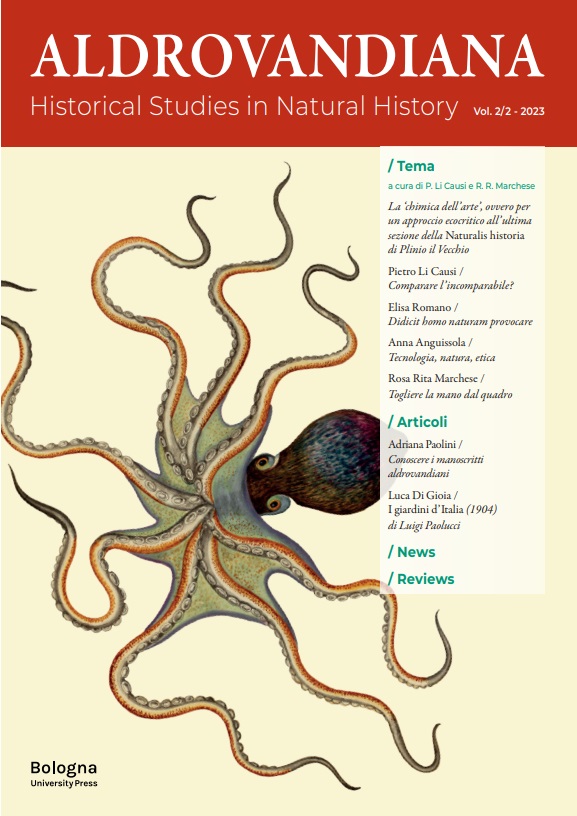Pubblicato 22-12-2023
Parole chiave
- Pliny the Elder,
- Glass,
- Transparent stones,
- Obsidian
Come citare

TQuesto lavoro è fornito con la licenza Creative Commons Attribuzione 4.0 Internazionale.
Abstract
Questo articolo tratta le strategie narrative e i concetti che hanno guidato Plinio il Vecchio nel suo racconto della natura, grazie all’analisi di un numero di passi dal Libro 26. I paragrafi finali di questo libro riassumono tre punti chiave sviluppati nel trattato: il ruolo della creatività umana, l’uso dei sensi per classificare il mondo naturale e la relazione tra morale umana e norme naturali. Questi punti sono esemplificati dal vetro, dalle pietre trasparenti (lapis specularis e phengites) e dall’ossidiana. Seppur all’apparenza aneddotici, questi brani sono cruciali sia allo scopo di condurre la narrazione verso l’ultimo libro, sia ai fini del discorso di Plinio sulla relazione tra materiali naturali e creatività umana. Sottolineando i principi di organizzazione adottati da Plinio, l’articolo affronta le premesse filosofiche, la prospettiva storica e il tessuto epistemologico della Naturalis historia.
